Colin Strong's Blog
January 17, 2023
How to Use Quantitative Data Analysis for a Strong Thesis Statement
Consider that machine learning is concerned with predicting or classifying new data points using an existing data set.
 Writing the Data Analysis Chapter(s): Results and Evidence
Writing the Data Analysis Chapter(s): Results and Evidence[image error]
Score 94% Score 94%
[image error]
[image error]
[image error]
[image error]
The results generated by doctoral research are unique, and this book cannot hope to outline all the possible approaches for presenting the data and analyses that constitute research results, but it is essential that you devote considerable thought and special care to the way in which you structure the report of your results (Section 6.1 on headings may prove helpful). Whatever structure you choose should accurately reflect the nature of your results and highlight their most important and interesting trends, and it should also effectively allow you (in the next part of the thesis) to discuss and speculate upon your findings in ways that will test the premises of your study, work well in the overall argument of your thesis and lead to significant implications for your research. Regardless of how you organise the main body of your results chapter(s), however, you should include a final paragraph (or more than one paragraph if necessary) that briefly summarises and explains the key results and also guides the reader on to the discussion and interpretation of those results in the following chapter(s).
Why PhD Success?This article is part of a book called "PhD Success" which focuses on the writing process of a phd thesis, with its aim being to provide sound practices and principles for reporting and formatting in text the methods, results and discussion of even the most innovative and unique research in ways that are clear, correct, professional and persuasive.
[image error]
The assumption of the book is that the doctoral candidate reading it is both eager to write and more than capable of doing so, but nonetheless requires information and guidance on exactly what he or she should be writing and how best to approach the task. The basic components of a doctoral thesis are outlined and described, as are the elements of complete and accurate scholarly references, and detailed descriptions of writing practices are clarified through the use of numerous examples.
[image error]
The basic components of a doctoral thesis are outlined and described, as are the elements of complete and accurate scholarly references, and detailed descriptions of writing practices are clarified through the use of numerous examples. PhD Success provides guidance for students familiar with English and the procedures of English universities, but it also acknowledges that many theses in the English language are now written by candidates whose first language is not English, so it carefully explains the scholarly styles, conventions and standards expected of a successful doctoral thesis in the English language.
[image error]
Individual chapters of this book address reflective and critical writing early in the thesis process; working successfully with thesis supervisors and benefiting from commentary and criticism; drafting and revising effective thesis chapters and developing an academic or scientific argument; writing and formatting a thesis in clear and correct scholarly English; citing, quoting and documenting sources thoroughly and accurately; and preparing for and excelling in thesis meetings and examinations.
[image error]
Completing a doctoral thesis successfully requires long and penetrating thought, intellectual rigour and creativity, original research and sound methods (whether established or innovative), precision in recording detail and a wide-ranging thoroughness, as much perseverance and mental toughness as insight and brilliance, and, no matter how many helpful writing guides are consulted, a great deal of hard work over a significant period of time. Writing a thesis can be an enjoyable as well as a challenging experience, however, and even if it is not always so, the personal and professional rewards of achieving such an enormous goal are considerable, as all doctoral candidates no doubt realise, and will last a great deal longer than any problems that may be encountered during the process.
Writing a Strong Thesis StatementGlancing through past dissertations helped me understand how a typical machine learning research paper is structured and led to numerous ideas about interesting statistics and visualizations that I could include in my thesis. Writing your thesis at a company simplifies the task of choosing a research topic as you are likely to be put to work on a particular business or research problem.

When you’re working on a research project for multiple months in a row, you are undoubtedly going to have a myriad of doubts and questions to which you won’t find an answer immediately. About how to tackle certain problems, articulate your thoughts or which methods to investigate. Please, for your own health and peace of mind, do not try to find the perfect solution for every problem or try to explore every sideroad there is. Imperfections are unavoidable and in some sense even beneficial. When you are annoyed by a particular problem, write it down! In the end, you can use this list of annoyances to explain the limitations and suggestions for future research in your discussion. Write down your arguments for different choices at every stage of the process so you can recite this when writing down the motivations for your methodology.
Resources:https://towardsdatascience.com/how-to...
https://www.gcu.edu/blog/doctoral-jou...
]
November 15, 2022
How To Build Effective Content Strategy For Photography Blogs
Introduction
In this article, I’m going to show you how to build effective content strategy for photography blogs.
I’ve been running a photography blog for the past few years, and I want to share with you some of the things that I’ve learned along the way.
What is Content Strategy?
Content strategy is the process of creating a plan for the content that you want to publish on your website. It’s a process that helps you decide what content to create, how to create it, and when to publish it.
There are two types of content strategy:
1. Content planning
2. Content creation
Content Planning
The first step in content planning is to decide what type of content you’re going to create. You’ll need to think about your target audience, your goals, and the types of posts that will help you achieve those goals. You should also think about the type of posts you want your audience to engage with, and how you want them to interact with your content. For example, if you want people to share your content on social media, you might want to create posts that are more visual than text-heavy posts.
Content planning can be a lot of work, but it can also be the most important part of your content strategy. If you don’t have a clear idea of what your content is going to look like, it can be really hard to create content that people want to read and share.
Here are some questions to ask yourself when you�re thinking about content planning:
– Who is your audience?
Who are you writing for? What are their goals? What do they want to get out of reading your content? How can you help them achieve their goals and make their lives easier?
– What are your goals?
What are you trying to achieve with your blog? Do you want more traffic? More subscribers? More followers? More likes? More shares? More comments? More sales? More leads? More conversions? More retweets? More clicks? More views? More subscriptions? More email signups? More social media engagement? More engagement on your social media channels? More feedback? More reviews? More testimonials? More brand awareness? More exposure? More press coverage? More partnerships? More collaborations? More influencers? More sponsorships? More events? More giveaways? More contests? More blog posts? More articles? More videos? More podcasts? More eBooks? More courses? More webinars? More workshops? More conferences? More classes? More training? More seminars? More presentations? More speeches? More interviews? More Q&A sessions? More polls? More surveys? More quizzes? More lists? More infographics? More slideshows? More galleries? More resources? More tools? More tips? More tutorials? More how-tos? More guides? More case studies? More examples? More inspiration? More motivation? More ideas? More advice? More opinions? More questions? More answers? More knowledge? More information? More content? More data? More research? More statistics? More stats? More facts? More figures? More graphs? More charts? More diagrams? More images? More photos? More video? More audio? More text? More words? More paragraphs? More sentences? More lines? More characters? More letters? More pages? More posts?
If you don’t know what your goals are, you’ll have a really hard time creating content that your audience wants to read. You’ll also have a hard time figuring out how to get people to read your content and share it with their friends and followers. If your goals aren’t clear, it’s going to be really difficult for you to figure out what to write about and how to write it.
You should also ask yourself the following questions when you’re thinking about your goals:
– What do I want my audience to do?
– How can I help my audience achieve their own goals?
– How can my audience benefit from what I’m writing?
– What can I offer my audience that they can’t get anywhere else?
If you’ve answered these questions, you should be able to come up with some really good ideas for your content planning. You can use these ideas to create a content plan for your blog. You can also use this content plan to help you create content for your website in the future. You might even want to use it as a template for creating content for other websites that you work on.
Content Creation
Once you have a good idea of who your audience is, what they want, and what you can offer them, the next step is to start creating content. The best way to do this is to write down all of the ideas that come to you as you think about what your audience needs and wants. Then, you can go back to those ideas and think about how you can turn them into blog posts and other types of online content. You’ll want to make sure that the content you create is relevant to your audience and that it answers their questions and solves their problems. If it doesn’t, it won’t be very useful to them.
September 26, 2022
How To Write Professional Emails (With Templates)
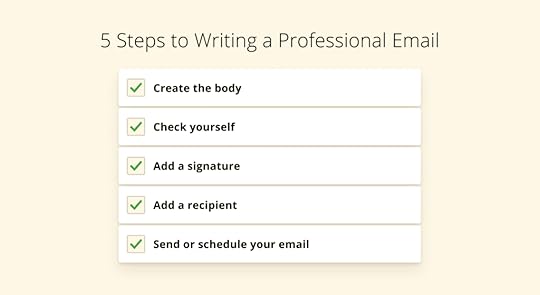
Professional emails offer an efficient way to handle important communications in the workplace. You might write an email to follow-up after an interview, respond to a job offer or connect with clients. Understanding how to draft professional emails allows you to confidently write competent and effective messages. In this article, we provide templates for several common professional emails.
A professional email is any communication that you make either as an employee or a prospective employee of a company. These letters should have a standard format and a professional tone. The use of industry jargon is acceptable when you’re writing to someone who is also familiar with these terms and phrases. Focus on using clear, concise language for professional emails as the recipient often has several communications to work through each day. Professional emails are brief and efficient, keeping both parties on task.
Formal email format: What to include in your email1. Subject lineThis is the crucial part of your email which defines if a person actually opens it. A good subject line informs a recipient what the email is about and why they should read it. Try to make your subject line clear, specific, and to the point. For example:
2. Email greetingHow to start a formal email? At the beginning of your email, greet a person by name. Depending on the level of formality, your salutations may vary from a simple “Hi” to an official “Dear Mr./Ms./Dr./Professor…” For the most formal occasions, use a colon instead of a comma after the salutation. For example, “Dear Ms. Smith:”
3. Email body4. Formal email closingThe formal email closing tells a recipient what’s next. If you want them to do something, include a clear and specific call to action. If you’re just wrapping up the discussion you’ve previously had, end your email on a friendly note to show a reader you’re willing to keep in touch with them.
5. SignatureFAQs about Professional EmailA standard professional email address format uses a combination of your first and last names and a domain name. However, if it’s a business email address, since the domain is usually the name of your company, the first part can be the name of a department.
Random numbers in a professional email address are not advisable. You could use a phone number as an email address; however, that will hardly be deemed professional. You’re also giving up your phone number sooner than you might want to.
A good email address is always a combination of your first and last names. It’s a safe bet; however, if someone has a similar first or last name to yours and uses the same email service provider, then you might be in a bit of trouble. In such cases, it’s better to opt for a custom domain name.
Anastasia is a content marketer and manager with a strong IT background, passionate about storytelling and SEO. She likes creating high-quality content and helping others develop their skills. Besides work, she loves traveling, extreme sports, and reading fantasy books.
RELATED ARTICLES
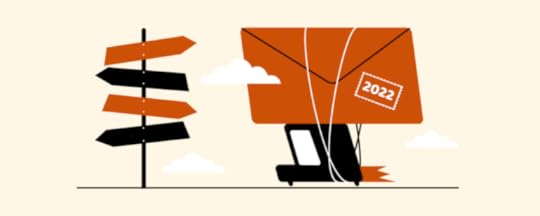
Thunderbird steadily became a popular free email client with a loyal following over the years. Yet, many users look for an alternative to Thunderbird, and the reasons are plenty. In this article, we.
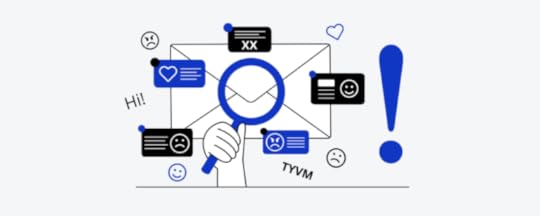
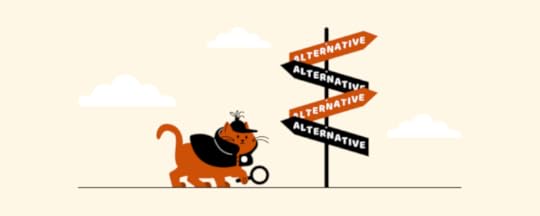
Outlook has offered its services for so long that you may have gotten used to its clunky interface, hidden features, and technical issues. But you are now probably thinking about how this love-hate.

Resource:
https://www.indeed.com/career-advice/...
https://sparkmailapp.com/formal-email...
5 Writing Product Descriptions: Tips, for Winning Descriptions (Examples, Templates)

A product description is the marketing copy on each product page that explains what a product is and why a shopper should buy it. The purpose of a product description is to give your customers any important information about a product that they are interested in buying, along with any other reasons they should purchase the product.
An ecommerce sales toolYour product descriptions can act as a valuable sales tool for your business by helping you directly target your ideal customers. Take time to evaluate how you want to come across. Make sure that your copies are error-free to establish trust and credibility. Like a good sales pitch, the copy should capture the tone and personality of your brand and the products you sell to help you connect with potential customers.
Describe product features and benefitsGood product descriptions should cover two main aspects: features and benefits. These are the bread and butter of your product page copy. A feature is a quality or a function of a product. For example, “This laptop bag is waterproof” describes a feature.
Be as specific as possible with your product copy and make sure you are clearly describing features and benefits. Don’t just say a product is high-quality; let shoppers come to that same conclusion through the product features and benefits.
How to Write Product Descriptions That Convert1. Do a Detailed Competitive Analysis2. Begin by Finding Your Transactional KeywordsWith SEO becoming one of the best ecommerce marketing channels to drive traffic and sales, you need to make sure your product descriptions are written with search engines in mind, too.
A lot of marketers make a mistake here by writing the product descriptions first and then optimizing them. But let me tell you, a properly planned and optimized description tends to give results faster.
Try using Semrush for keyword research and the Keyword Insights tool by Snippet Digital to identify the search intent of those keywords. When you know the search intent of the keywords, you can use the right ones for your product description.
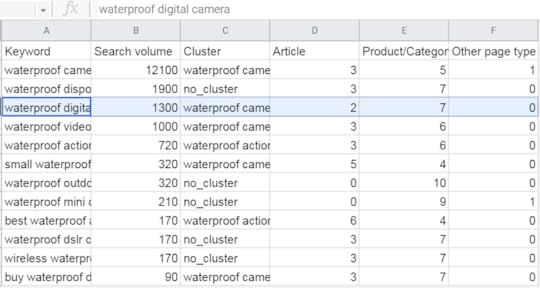
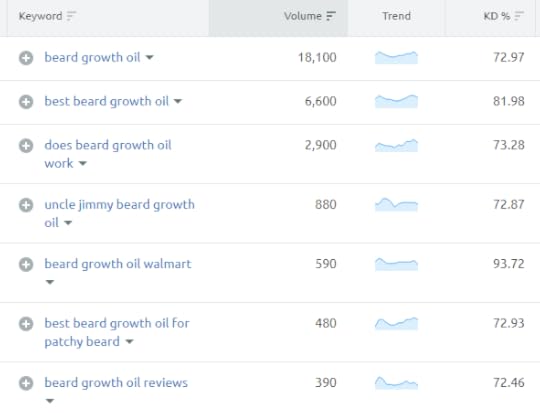

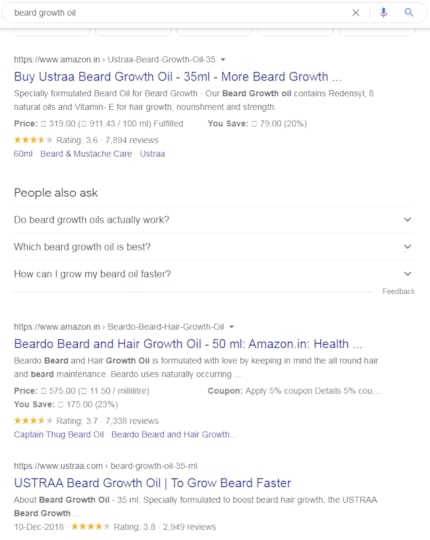
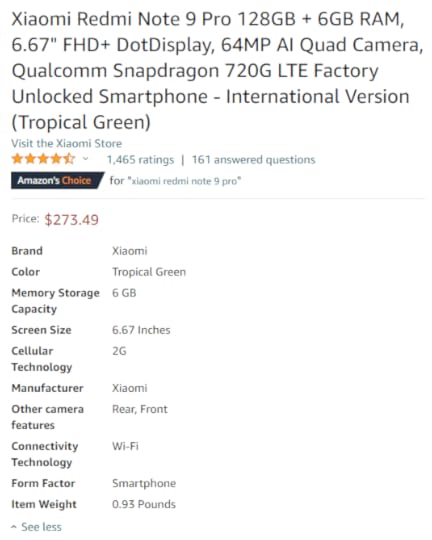
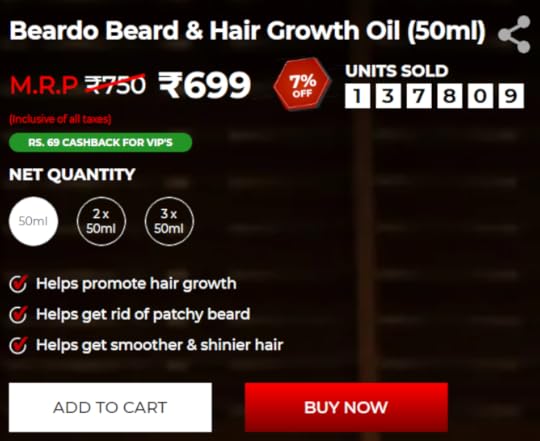
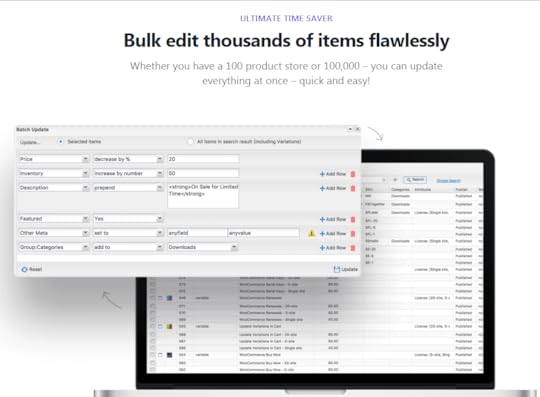
Premium/luxury brands or niche brands have a different set of buyers which they may target only through social platforms or emails. This is where creativity matters more than keywords.
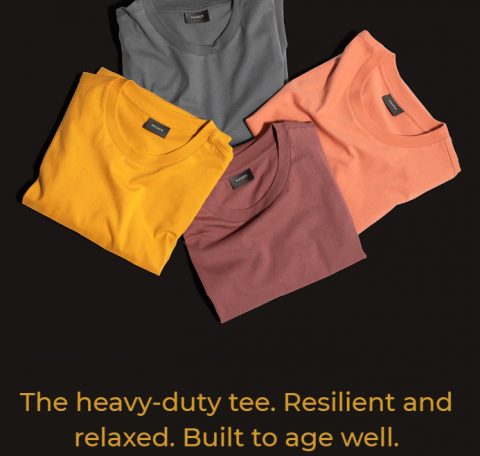
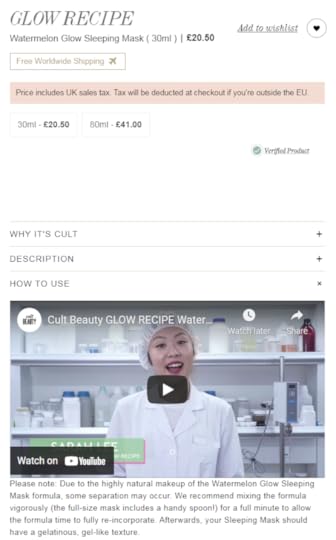
You’re saving consumers time by adding a how-to section within the product description, both speeding up the conversion process and reducing the risk they’ll wander off to find information and never come back.
8. Add Your Brand Story With a Shorter BackgroundTo stand out in marketplaces, help customers understand who you are and why they should do business with you. Add your brand story with a little history of your company and products to your product description.
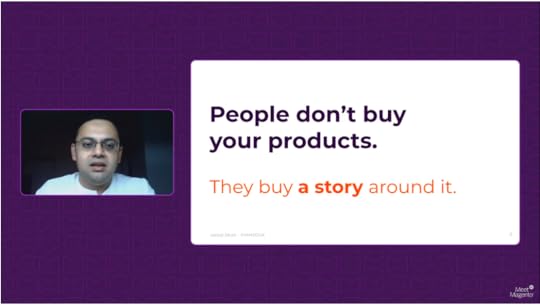
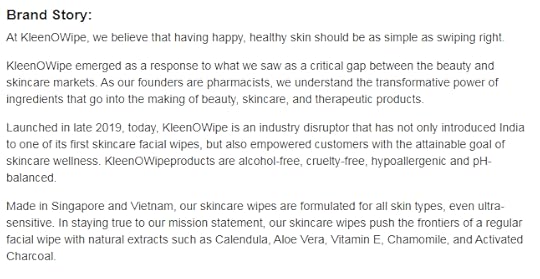
When adding such social proof, you’re providing genuine reviews on how people perceive your products. That psychologically impacts visitors in the very moment they’re looking to make a buying decision.
Pro Tips for Writing a High Converting Product Description


You can choose your style either way, but it is crucial to make sure that your format, style, design, and tone are based on your brand vision and align with the type of personality you want to sell to.
2. Think About Layout and ReadabilityDepending on the type of product you sell, you might include a lot of information in your product description. In this case, you should think about your potential buyer – the goal is to make navigation as pleasant an experience as possible for them.
3. Provide ValueGive precise details to your readers, rather than making statements. This will help you appear more trustworthy and knowledgeable about what you’re selling, increasing your success chances.
4. Pay Attention to the Visual ElementsThink about various creative ways to show your product the potential buyers. Including visual elements increases your chances of getting a sale. These elements can be graphics, pictures from different angles, and photos of the product details.
5. Double-Check the Information You ProvideMake sure that the information listed in the product description is valid and checked. Studies show that almost half of the returns happen because of misleading product descriptions, which can have negative results.
What is the purpose of creating a product description?The primary purpose of a product description is to help buyers decide what to buy by giving them information that could be useful to them to make a choice. A good product description is the best salesperson sitting on your product page 24/7 to help you sell your products.
What is a good product description format? What are the things to avoid in writing product descriptions? How do I write a product description copy?Sources:
5 Writing Product Descriptions: Tips, for Winning Descriptions (Examples, + Templates)
https://www.searchenginejournal.com/w...
How to Write a Product Description: The Ultimate Beginner’s Guide
How to Write a Blog Post: Practical Tips for Beginners

Whether you’re just starting out, or you’ve been blogging for years, learning how to write a blog post is something everyone needs to master. Unfortunately, so many people out there are writing blog posts that are thin, not formatted properly and will never be shared by humans or loved by Google bots.
There’s a simple and easy-to-follow formula that you can use to make sure that you’re creating the best content possible, both for your readers and for search engines. If you know how to write a blog post properly, then you can grow your audience, keep readers on your pages and help more people with your blog.
In this post I’m going to show you the secret to how we’ve written so many blog posts that have helped us grow this blog to over 375,000 readers per month and how you can write articles that people will share on their social platforms, helping you to grow your traffic quickly.
How To Write a Blog Post (Blog Writing Basics)Don’t worry, if you’ve been blogging for a long time and looking for some advanced strategies, we’ll get there later on in this post. But first, we have to cover some of the basics of how to write a blog post. Surprisingly, even some pro-bloggers fail to follow the basic rules of blog writing.
1. Write an IntroEvery good blog post is like an essay. It needs to have a well-defined beginning, middle, and end. The intro to your blog post should be no more than 3-4 paragraphs and in the first paragraph, you should clearly outline what your post will be.
In the case of a travel blog, this might mean making it clear that you have spent more than a few hours at the destination you’re writing about (Did you live there? Spend a week there?). For a tech review, it should be clear that you know what you’re talking about and have personally used the product you’re reviewing for a considerable amount of time.
This is a little something to entice them to continue reading. Sometimes this will come in the form of a short sentence that says something like “read on to find out which places to visit and why I wouldn’t go to some of them again”. This kind of writing can hook people into reading more of your content and helps to keep them engaged.
2. Write “The Middle”The middle of your content is the meat of the post. Make sure you break up this content well and make it as easy to read as possible (more about blog post formatting later in this article). You should have as much information as you can about the topic you’re writing on.

The biggest mistake that bloggers make when writing an outro is that they simply repeat the intro. This is a big no-no. The outro is one of the most important parts of a blog post because if people made it that far, they obviously like what you wrote. This is your chance to get them to remember you.
Leave them with something to think about. Give them a question to engage with. Offer them something extra like a short ebook on the topic. Get their email if you can. Encourage them to comment. Lead them to more posts on your blog that are about a similar topic.
It’s important to note here that you should never open a new line of thought in your outro. It can be very jarring to a reader – who has managed to complete reading a long post – to reach the end and find that there’s much more that wasn’t discussed in the article.

Before picking your first blog post format, identify the search intent behind the topic’s main keyword. This shows what users are attempting to accomplish when they enter a query, allowing you to match the content with their expectations.
Informational – people with informational intent have a specific question and want to know more about a particular topic. Some formats that might be suitable for this intent are list, how-to, and what posts.Navigational – users with this type of intent usually want to visit a specific website or web page. In other words, a page will be irrelevant to their needs unless it’s precisely what they’re looking for. For instance, people who search for “LinkedIn” are usually on their way to the LinkedIn website.Transactional – people searching with transactional intent usually plan to buy a product or service and use search engines to do their research. Consider writing blog post types such as comparisons or reviews for terms with this intent. Aim for an Engaging TitleBefore you start to write a blog post, try creating a working title – it’s a temporary title that describes the topic and works as the starting focus point for writing.
A working title doesn’t have to be perfect. It just needs to be specific enough to guide the blog post. When you finish writing the blog content, it’s time to focus on making a perfect post title.
Expert TipAdd numbers – if you’re creating a list post, consider using numbers in the headline since a title with a number performs better than other types of headlines. Additionally, including a number can tell readers how long an article will be. Here’s an example of how we used a number in our tutorial about profitable things to make and sell:Avoid vague headlines – a headline should have a clear value and indicates certain promises. The more precise the benefit, the more likely target readers are to click. Ask the question “What’s in it for me?” on behalf of your reader when writing headlines.Prepare multiple titles for each post – according to a study by Orbit Media, bloggers who spend time writing lots of headlines before choosing one see better results. Try creating several titles using different formulas and choose the most appealing one for the blog post.Consider a negative title – one excellent method to create a great blog post title that generates clicks is to include a negative sentiment in the headline. A study by Backlinko shows that a negative title has a 7.2% higher click-through rate (CTR) than a neutral headline.Ask a question to spark curiosity – question headlines can be a compelling hook to generate interest and draw in readers curious about the answer to the subject you’re asking. Based on Backlinko’s research, titles containing a question have a 14.1% higher CTR than pages without a question in their headline.Use a page title generator – utilizing a free tool like Portent’s Content Idea Generator can be an excellent solution for those struggling to come up with great blog posts’ titles.Write long headlines – according to BuzzSumo, long headlines work better when it comes to engagement. A long headline usually contains more information, helping readers understand the benefit of clicking on that blog post.Include hyphens and colons – titles with hyphens or colons perform better than other headlines. A simple technique for using hyphens and colons is to use target keywords at the beginning and add a compelling title after it.Improve the title – use a headline analyzer to provide feedback on what to improve in a title.Resource:
https://www.goatsontheroad.com/how-to-write-a-blog-post/
https://www.hostinger.com/tutorials/how-to-write-a-blog-post
How to Develop your Branding through Content Strategy and its Effects on SEO
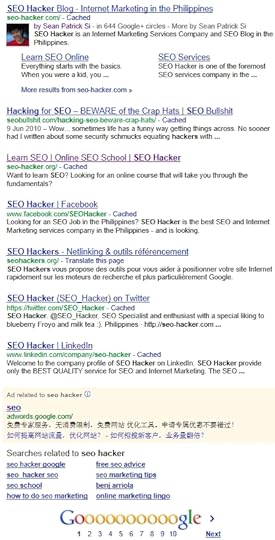
When I spoke to multiple CMOs last year, they all mentioned one key challenge they faced: an inflating need for content. The creation of advertising and communication content has become a key issue for brands, with consumers spreading their attention across multiple offline and online channels, each of which offers multiple formats for engaging with different target groups. Consequently, brands have been forced to create more content pieces than ever to communicate with different target groups. Some companies are producing thousands of pieces of content every year to cover their most important channels and formats.
With these changes in media consumption and media formats comes the question: How can marketing teams deliver that much content in a cost-effective way? Let’s explore some innovative solutions that smart marketers should tap into in 2022.
User-generated content (UGC) is content that actual users of a product or service create. In my experience, people tend to perceive it as highly credible and trustworthy. Because customers are likely to trust the opinions and product recommendations of friends, family and acquaintances more than those of brands, they are more likely to consult UGC on social media or product review sites to make a purchase decision. Brands can encourage UGC production by reaching out to their actual customers, running contests, holding Instagram-worthy events, conducting product testing campaigns or turning their CRM system into an advocacy program.
Whether they’re paid or unpaid and nano or macro, influencers’ campaigns can generate high-quality and sometimes even high-quantity branded content. Professional macro and celebrity influencers often create high-quality content according to brand guidelines that is comparable to professional photo or video production. Collaborating with hundreds of nano- or micro-influencers, on the other hand, might not deliver the highest possible quality, but consumers may perceive them as more authentic, and I’ve found that they can really drive “FOMO” simply because of the quantity of content they can produce across multiple platforms. By using professional agency partners and contract templates, your brand can help ensure that it’s able to amplify the best content pieces or leverage them for its website, e-commerce stores or CRM programs.
Best Travel Insurance CompaniesYour most passionate brand ambassadors are sometimes only a click—or a doorstep—away. They could be some of your existing customers, some of your key opinion partners or some employees, all of whom could create content to express their brand love. Brand ambassadors are passionate about your product or service and happy to develop emotional content that will resonate with other potential customers. Create a brand ambassador program to boost branded content, drive engagement and potentially increase sales. But you don’t need to stop there; your brand could also involve ambassadors in product development and co-creation or involve them in marketing decisions. You can find more insights and ideas about how to collaborate with brand lovers in one of my previous Forbes Communications Council articles.
A content factory is a centralized hub for planning and managing content production tasks, such as copywriting, video and photo production, editing or post-production tasks. This hub can enable brands to efficiently create large amounts of content within time, resource and budget constraints. Companies could set up their own in-house department or partner with a local, overseas or fully remote agency to accomplish this. It is advisable to select the type and location of the hub based on the company’s objectives and its need for control, effective communication and financial savings.
Investing in more upfront content planning and the right production setup is another strategy for sourcing more high-quality content within time and budget constraints, as it allows marketers to stay organized and know the number, concept and format of content pieces they’ll produce in advance. Content stacking, or the pyramid method, involves creating smaller pieces of content that marketers can use to form a much larger new content piece. For example, a team responsible for five product lines could create video and photo content for each and then stack them into one big story. Content repurposing, on the other hand, involves reusing or adapting one larger piece of content to create multiple smaller content formats. For example, marketers could cut one long-form YouTube video into photos, posts, stories, ads and reels for social media communication.
A consolidated SEO strategy is key to optimizing your brand’s position in Google search results and driving traffic to your website. I characterize high-performing, SEO-friendly content as written journalistic content of more than 500 words that is tailored to a brand’s audience and has appropriate structure, grammar and spelling. Brands can source written content from their content factory or third parties, such as content agencies, freelance editors or corporate publishers. When they’re planning an SEO and written content strategy, brands should conduct thorough research and analysis of search terms, keywords and user journey performance and should carefully steer their content writing accordingly.
Partnering with publishers such as offline and online magazines and blogs allows brands to leverage visual and written content, boost exposure and awareness and reach a broader audience. Being featured in an established publication with authentic and relevant content can also help generate word-of-mouth marketing, which can boost trust and emotional connection with the brand. Select publishers according to your brand’s objectives and consider various factors, such as your industry, target group, credentials, content style, and the channels and opportunities you’d like to pursue. Some publishers these days may even be willing to develop customized online or offline magazines that are fully tailored to the needs of the partner company.
With consumers spending a lot of time-consuming media and with companies continuing to launch sub-brands for more niche audiences, there is an exploding need for branded content creation that traditional agency setups may no longer be able to cover. Smart marketers should leverage some of the options described above to deliver thousands of powerful content pieces for different channels and formats within a reasonable budget.
Content Strategy is Giving Away Part of Yourself to your Target AudienceBrands stick when they give lasting value to a person – enabling the brand to touch the person’s emotional level and climb its way up to the person’s memory. Eventually, that brand will make the person’s ‘top-of-mind list’ and acquire word of mouth referrals. Consequently, if that person is a blogger or webmaster, the brand might be able to get word of mouth links. Lasting value means that you have to:
If you’re writing a tutorial, tell them what you did, how you did it and how they can do it too. If it includes cost, tell them, if you generated revenue out of it, tell them. People appreciate transparency – even in short talks with a stranger at the pet shop.
SEO Hacker has been very transparent in our tutorials. Check out our Content Strategy tutorial and our other free tutorials in SEO School – study how we dished out great, free and valuable tutorials with full transparency even to code-level.
Know what they want. Listen. Publish content that help your target audience. Give them value. Give them answers. Guide them. Educate them. You can’t tell them that it’s not your responsibility because it is if you want them to reciprocate your branding with their loyalty.
People won’t know who you are and what you stand for unless you tell them. They will know your products and services but they also want to know who you are (even if it doesn’t seem that way sometimes). People are always looking for a story. Stories are hardwired into our system as human beings. Tell them your story – it’s one of the main keys to effective branding.
This comes after trust and loyalty. This is the stage where they will nod their heads with just about anything you say – because they believe in you and they simply like who you are and what you do.
Once you have their patronage, it won’t be a tough job selling to them. Of course, don’t sell them anything that will harm that trust, loyalty and patronage you’ve worked so hard to build.
It doesn’t stop with a purchase, more often than not your target audience will remember you especially when another person approaches them and asks for help in the specific niche you’re involved with.
Evaluating the performance of brand contentAs you know by now, brand content has a direct influence on your brand image. This means measuring its impact can be trickier than with content marketing, as the latter aims to convert rather than entertain.
Purchase intention among members of your target audience that have been exposed to your campaign. You could measure that by running a simple survey among your current prospects and customers. Just ask them whether they’ve seen your content and whether they are considering a purchase in the near future.Brand preference—here too, a survey would be the way to go to gather data.Social media engagement—just check how well social media posts featuring brand content have been performing in terms of likes, comments or shares.Backlinks—a successful brand content campaign should make people talk about it online, which is also beneficial for your SEO.Keeping an eye on the numbers will help you identify your own best practices. After all, a successful brand content strategy implies constant improvements to find ways to increase your audience’s engagement and loyalty.

Sources:
https://www.forbes.com/sites/forbescommunicationscouncil/2022/06/21/seven-strategies-for-maximizing-branded-content/
https://seo-hacker.com/develop-branding-content-strategy/
https://playplay.com/blog/brand-content-eng/
Examples of E-mails to Prospective Employers

For a medium that has done wonders to expedite communication, emails have also done their share to confuse matters when it comes to applying for a job. Of course, this is not the fault of the medium but rather prospective employers, who do not always specify what they want or how they want it – specifically, a cover letter pasted below the email message or attached in a separate document. And what do you do if they fail to mention the cover letter at all? Clear up any confusion once and for all, revisit a smart cover letter format and then consider several email examples to potential employers. A collateral benefit of undertaking this exercise is that you’ll gain confidence – and that’s a helpful commodity for anyone conducting a job search.
Before you take a deep dive into communicating with a potential employer by email, it may help to absolve yourself of one common misconception: You should send a cover letter, whether or not the employer asks for one. Whether you include it at the bottom of a brief email message or send it as an email attachment, there are good reasons to take the time to write a cover letter, BestPractice says:
The presence of those other candidates has partly fueled the trend toward “solo submissions,” or those that include only a resume. The thought goes that employers receive so many responses to job ads – sometimes hundreds for one position – that they probably don’t have time to read all those cover letters anyway. So why bother?
Undoubtedly, there’s some truth in this rationale. At the same time, recruiters may not have much time to read resumes, either. They mention the word “scan” far more frequently than any other (giving rise to advice about listing work experience and skills with bullet points, which make scanning easier). But who would consider applying for a job without sending a resume?
Some day, all job seekers may come to regard cover letters the same way – as a necessity – after they realize that cover letters can convey an applicant’s personality in a way that resumes cannot. Until then, revisit those reasons and ask yourself: What hiring manager wouldn’t find this information helpful as he hones in on the “right” candidate? And that candidate could be you – if you’re willing to take the time to write a cover letter.
What You Should Be Sure You Have Before You Send Your EmailAgain, you must have an employment offer. Because in the instance where this goes south, you can always back up and say that the original employment offer is just fine. You can apologize, say that working with that company is more important than any other task you might have, and say you’d be willing to sign the original employment offer.
Example oneI’m very excited about the opportunity to be working with you. There are a few major pros to signing the employment contract. Working with (Company) will advance my career. I do have another offer with (Company 2), and it provides advancement in skill sets that I haven’t used enough.
Example twoI’m very eager to be signing the employment offer with (Company). Clearly, there’s a vast amount of benefits that will advance me in my career. I received another offer from (Company 2), and it was unexpected. The salary offered was substantially higher than this offer. And that is making my decision difficult.
What templates should you use to respond to job applications?We have received your application for the position of [title]. Thank you for your interest in our company! We are currently in the middle of our recruitment process, and initial screening should be completed by [insert tentative date]. You may expect another response around this time.
In the meantime, you can learn more about [company] by following us on social media [insert social media links] and our company website [link to website] for the latest updates.
You may contact me at [telephone number/email] if you have any questions regarding your application.
We received many applications for this post, and after reviewing all of the applicants, we had to narrow down our search to determine those who would move on to the next stage of recruitment. After thoroughly reviewing your application, we regret to inform you that you have not been considered for the position.
Please let us know if you are interested in moving on to the next recruitment stage. If so, the following schedules are available for your interview:
[Insert three interview schedule options]
We received many applications for this post, and after reviewing all of the applicants, we had to narrow down our search to determine those who would move on to the next stage of recruitment. After thoroughly reviewing your application and interview, we regret to inform you that you have not been selected for the position.
We are pleased to inform you that you have passed the interview stage and have been selected to be [company]’s new [position]! We are happy to welcome you to the team and look forward to working with you soon.
At JobStreet, we believe in bringing you #JobsThatMatter. As a Career Partner, we are committed to helping all jobseekers find passion and purpose in every career choice. And as the number 1 Talent Partner in Asia, we connect employers with the right candidates who truly make a positive and lasting impact on the organisation.
SEEK Asia, a combination of two leading brands JobStreet and jobsDB, is the leading job portal and Asia’s preferred destination for candidates and hirers. SEEK Asia’s presence span across 7 countries namely Hong Kong, Indonesia, Malaysia, Singapore, Thailand, Philippines and Vietnam. SEEK Asia is part of the Australian Securities Exchange-listed SEEK Limited Company, the world’s largest job portal by market capitalisation. SEEK Asia attracts over 400 million visits a year.
SEEK is a diverse group of companies, comprising a strong portfolio of online employment, educational, commercial and volunteer businesses. SEEK has a global presence (including Australia, New Zealand, China, Hong Kong, South-East Asia, Brazil and Mexico), with exposure to over 2.9 billion people and approximately 27 per cent of global GDP. SEEK makes a positive contribution to people’s lives on a global scale. SEEK is listed on the Australian Securities Exchange, where it is a top 100 company and has been listed in the Top 20 Most Innovative Companies by Forbes.
Sources:
https://work.chron.com/examples-emails-prospective-employers-18100.html
https://www.algrim.co/444-how-to-tell-a-potential-employer-you-have-another-offer
https://www.jobstreet.com.sg/en/cms/employer/how-to-reply-to-job-applicant-emails/
Build Your Brand Strategy in 3 Steps
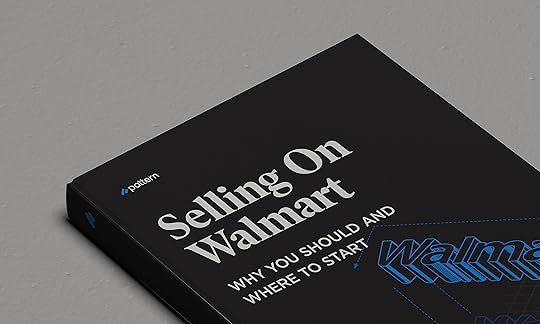
A strong brand identity doesn’t happen overnight. You can’t just pick a few colors and haphazardly slap a logo together. You need to approach your design strategically to build an identity that truly reflects your brand—and can support you as you grow. This requires deep thinking, a team with strong communication and design skills, and an intimate understanding of who you are, what you do, and how you want to present your brand to the world.
This work isn’t easy, but it’s some of the most important work that any brand can do. So if you’re going to do it, you might as well do it the right way. Of course, tackling a brand identity can be both intimidating and confusing. What should it include? How do you start? Who needs to be involved?
Don’t worry. With the right guidance, you can move through the process effectively, and that’s why we’re here. To make it easy, we’ve broken it all down into this simple step-by-step guide, including our best tips and handy toolkit to help you along the way. Follow this guide and you’ll end up with a beautiful, functional brand identity that will help you outshine your competition, connect with the right people, and tell your brand story through every piece of content.
Table of ContentsWhat Is a Brand Identity?Branding pro Marty Neumeier defines a brand identity as “the outward expression of a brand, including its trademark, name, communications, and visual appearance.” To us, a brand identity is the sum total of how your brand looks, feels, and speaks to people. (Sometimes that even includes how it sounds, tastes, feels, and even smells.)
A strong brand identity is not about making pretty packaging; it’s about communicating your brand story effectively. Design is a powerful tool that can transform how people interact with your brand in three important ways.
Differentiation: How can you stand out in a crowded marketplace? Your brand identity can play a strong role. Whether you want your product to stand out on a shelf, or you want your ads to stand out on Facebook, creating a consistent, cohesive presentation is the secret to success.Connection: The more effectively you communicate who you are, the easier it will be for people to engage with you and, ultimately, join your community of lifelong fans.Experience: Everything you create reflects your brand. Thus, if you want to create a consistent, cohesive brand experience, you need to present a consistent, cohesive identity. From your website, to your social media, to your sales brochures, a strong identity is the key to elevating your brand experience.Some brands elevate brand identity to an art (think Apple , LEGO , or Levi’s ). Some brands make it their entry into the playing field (think Warby Parker or Casper ). Others struggle because they don’t know who they are or don’t know how to communicate it effectively. (The truth is too many brands fall into this camp.)
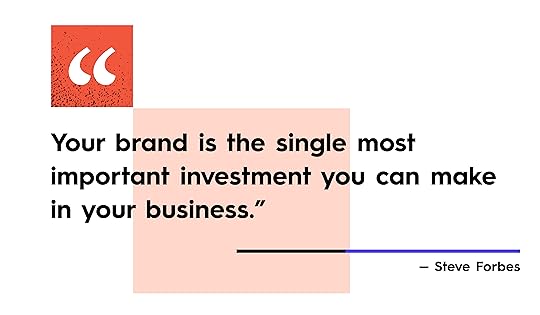
Your brand strategy is your company’s approach to building and maintaining a brand that resonates with consumers. Brands may achieve this goal through various means, but the core goal remains the same: creating and communicating a strong, familiar brand that fosters a loyal customer base.
The first step of brand strategy is to mindfully create a brand. We don’t mean creating a product or business—a brand isn’t just a company, logo, color, or name. A brand is how people perceive your company, logo, or name. It’s the implicit feelings wrapped around your product.
To create a brand that resonates with consumers, you should first understand who you are as a brand, who you want to be as a brand, and what your products stand for. You should also seek to understand your customer, what’s important to them, and why they need your product.
Next, develop a brand systemOnce you’ve established your brand, the next step in your brand strategy should be developing a brand system to ensure you’re successfully communicating your brand identity and values. One way to develop this system is by creating what we call a kit of parts full of different elements—written, visual, and graphic—that reinforce your brand. This may include iconography, typography, voice, colors, logos, and more.
It’s also best practice to provide a style guide, photo guide, brand guide, or other similar established guidelines for anyone who will be creating assets for or representing the brand. These guides should identify each piece of the brand and how they should be executed. Make sure that all employees, partners, agencies, and sellers follow these guidelines.
5 Steps to Building a Strong Brand Identity When the Game Is Constantly Changing

According to Brandwatch, the internet has approximately 3.17 billion users; 2.3 billion of them are active social media users-which is 176 million more than last year. 91 percent of retail brands are generally aware of this fact and use an average of 5 social media channels to grab the attention of all these folks.
The last decade (or hell, just the last five years) has seen an incredible shift in the way companies market their products; with social media, robust search engines, and access to mobile technology, we’re literally drowning in content-most of which slips right under the radar. And yet, content marketing is one of the main drivers of businesses today.
It’s a puzzling scenario for sure, but the simple explanation is that businesses succeeding in marketing are those with a clear, undeniable perspective. or in other words, a strong brand.
Some leaders will go to their grave proclaiming they know their business identity, but the truth is, their marketing efforts just aren’t paying off the way they should. And there’s no shame in that. Sometimes, when you’re too close to your business, it’s difficult to know the way it is perceived from the outside.
Experts like Raquel Baldelomar, Founder and Managing Director of Quaintise, and Matthew Dinnerman, Partner and Director of Strategy, help companies realize the strength of their brands every day. Quaintise is a Santa Monica, California-based branding, marketing, and PR agency that works with intricate business models to convey a brand’s message to the right target audience in a meaningful way.
“The first step is to determine where you stand in the marketplace and to understand who your customer is,” says Matthew Dinnerman. To do so, a company leader must uncover what is most important for driving growth and analyze how the product or service is actually viewed by consumers. Additionally, an in-depth competitor analysis – including a review of competitor websites, search engine optimization, brand identities and advertising – informs who they will compete with for market share, how to differentiate, and what strategies to employ.
Case in point. Clearpath, a Dayton, Ohio-based company that provides a digital pathology software solution for dermatologists, hired Quaintise to create its brand identity and marketing strategy. “We needed a strong identity that represented the revolutionary services the Clearpath technology offers the dermatology community,” says Clearpath Director Dan Angress. “We positioned the brand as a leader in the field by developing a corporate identity that illustrated its modern and streamlined technology. This showcases Clearpath’s value to customers.” Based on the branding effort, Quaintise has helped Clearpath increase web traffic more than 20% per month. In addition, Clearpath is now receiving a steady stream of leads from interested dermatology practices nationwide.
In order for a branding effort to be successful, a company must first identify its core philosophies, such as its mission statement and values. It’s also important to determine your brand’s value proposition to the consumer. This is the foundation of building a brand that truly represents your organization.
There are several ways to arrive at these strategy cornerstones. “We work closely with our client’s management, stakeholders and customers to analyze and condense gathered intelligence into descriptive messages that embody the company and brand’s meaning”, says Dinnerman. “We capture the essence of the company and brand though this process. We look for a unique and original voice to represent the brand.”
For example, there are constant changes in the online travel space, which is why brands need to establish an intrinsic value that will stand the test of time. This is something that Villaway, a luxury vacation rental marketplace for the jet set, partnered with Quaintise to do-build a brand that is distinctive and timeless. To that end, Quaintise developed the tagline: The Best Way to Stay. This tagline connects to Villaway’s core values, says Joe Liebke, CEO of Villaway. “The brand is built on the values that appeal to the most important constant in the luxury vacation marketplace-customer satisfaction.” The tagline goes hand-in-hand with creating an experience that is memorable and unique.
The next step is to create the look, feel, and voice of the brand that will be carried through all marketing channels – from the website, to social media, advertisements, and packaging. “A brand’s visual vocabulary will be reflected in your colors, fonts, logo and overall style,” says Raquel Baldelomar. The brand voice should be distinctive, resonate with your customers, be consistent and stay true to your company’s values.
Sources:
https://www.columnfivemedia.com/how-to-create-a-brand-identity/
https://pattern.com/blog/build-a-strong-brand-strategy/
https://www.inc.com/molly-reynolds/5-steps-to-building-a-strong-brand-identity-when-the-game-is-constantly-changing.html
2022 175 Free Online Writing Courses to Improve Your Skills

Becoming a better writer can help you achieve professional and personal goals. Whether you’re preparing for university studies, drafting résumés and cover letters, writing sales copy, or trying to preserve your own memories, you need to be able to communicate through writing. Fortunately, free writing courses abound to guide you in your writing journey.
Want to start writing fiction? There’s are several writing classes for that, several actually. There are also free writing online courses that will teach you to write better business emails, create compelling online posts and social media updates, and prepare technical reports. English language learners, teachers, and grammar nerds will also find some courses on this list. In short, whatever it is that you’re writing, chances are you can improve your craft with one or more of the courses below.
Quick note: While many of these courses do come with fees, all of them are available to audit in full or in part. If you’re new to MOOCs and want to learn more (including how fees work in these courses), check out our Beginner’s Guide to Massive Open Online Courses.
Resource:
https://www.classcentral.com/report/writing-free-online-courses/
10 Types of Content Writers and When to Use Them

There are days when writing for the web can feel like shouting into the void. I craft a story to be published and wonder who is actually reading it. The reality is that no writer wants to create copy that nobody reads.
We research what people are sharing on social media. We dive into organic search analytics to figure out how people are searching for the topics we’re covering and how search engines are providing them answers. We read content on similar topics to see what other writers are doing and make sure we can differentiate our content.
Every piece of content I create on a given day begins with strategy. Usually, it’s a combination of collaborative discussions with clients and independent research, but regardless of the methods, the goal is the same: Tell a story that’s engaging for the reader, valuable for the client and strategically designed to get noticed on the web.
In a lot of ways, a professional content writer is a well-rounded content specialist, with strengths in multiple content marketing disciplines. That’s how great content is born: mapping SEO, social media, technical research and more to the core task of putting pen to paper.
Relationship with SEOUltimately, as a web writer, my relationship with SEO is extremely practical. I’ve been trained to identify effective keywords and do some big-picture strategic thinking about how terms are best used in a content marketing strategy. However, it’s important to prioritize developing strategies to build content around those terms without overtly cramming in key terms or buzzwords.
Marrying SEO with content writing is very much like threading a needle. It requires a delicate, intentional touch. Plus, a content writer job doesn’t end when a piece is published. There’s also social media or email promotion to be factored in, as well as the larger marketing performance itself. A blog, for instance, can live on the internet forever and can be circulated through email and across social media. This means I have to consider how my work will be featured, optimized and talked about online.
The post-publication takeaways (Did it generate social media buzz? Did it help drive open rates or time on page?) are then cycled into my next piece for that client. Every post is a learning experience.
Whereas a purely technical writer or a content mill operates in a vacuum, churning out content with little insight into end goals, I’m tasked with putting a lot of pieces together. I have to anticipate future blog performance, understand niche lingo, be proficient in distribution channels and optimize for search engines. The writing is but one part of being a digital content writer.
10 Types of Content Writers and When to Use Them

What types of freelance content writers do you need? The answer to that question depends on the business goals for the content you want to create. Before you begin hiring freelance talent, define the purpose and goal for each assignment to ensure you attract candidates with the skill sets to match the type of writing required.
You have limited time and resources to see your content vision through. You won the budget battle and now you must assemble a powerful team. You have stories to tell, a brand reputation to protect, sales goals to reach, and a rebrand to finish. And thankfully, you can find a specialized writer to support all of these grand efforts.
What does a content writer do?A content writer does many things because there are many types of freelance writing niches. Every writer specializes in different areas, bringing unique skills and experiences to the table. But you will also find plenty of overlap across the content types each writer can handle.

A blog writer knows how to turn complex topics into warm conversations. They are devoted to making engaging content that performs well. For a single article, they will work four hours on the draft and consider six blog titles along the way. Eventually, the blog writer will settle on a title with the highest click-through potential.
Blog writers use their inquisitive powers to hunt down and source data points that strengthen blog content. If they don’t understand a topic, they know content can’t be faked so they reach out to subject matter experts for support. They also collaborate with influencers and experts to produce interviews or add contributor quotes that bring more credibility to content.
Since a published blog post is ultimately another page on your website, blog writers also tend to have SEO expertise. If scoped into the project, some blog writers will perform keyword research and optimize the content. Others will take direction from your overarching SEO strategy. A skilled blog writer always integrates keyword phrases appropriately without sacrificing the integrity of the content.
 2. Brand journalist
2. Brand journalistA brand journalist is a natural-born storyteller and they don’t rest until they find their story. These writers are more extroverted by trade and they feed off the energy of their interview subjects. They will send cold outreach emails and follow up with phone calls to see the story through.
Brand journalists make excellent brand ambassadors. Whether they are writing press releases or customer stories, they will show your brand in a positive light. They understand the fragility of a brand’s reputation, so it is in their nature to regularly fact-check data and quotes before anything is published.
A brand journalist excels at long-form content and human interest pieces that are pitched to third-parties for media or publication placements. They also have a knack for writing highly compelling headlines that drive click-throughs and shares.
 3. Copywriter
3. CopywriterA copywriter is agile, able to switch their creative brain fluidly between an impressive range of topics and projects. They get how to connect blocks of information so the reader finds ease in even the most complex digital journey.
They simultaneously speak the language of your brand and your customer. From product descriptions to website pages, copywriters cobble together experiences with every sentence. Copywriters are curious and analytical, so expect to provide details and data to help them craft messaging strategically.
 4. Ghostwriter
4. GhostwriterA ghostwriter is a chameleon, so skilled at their writing craft that they shapeshift into the dedicated voice that belongs to both brands and people. Ghostwriters fill content resource gaps when your organization does not have the bandwidth, the skills, the motivation — or all of the above.
This writer churns out articles for various team members and thought leadership pieces for your CEO. They take on the ebooks and white papers your team has been unable to produce all year due to time constraints. A ghostwriter has a good bedside manner as they are used to asking people in-depth personal and professional questions to capture expertise, stories, and tone.
 5. Technical writer
5. Technical writerA technical writer is frequently confused with a tech writer, but their skills are distinctly different. A technical writer is an ace at making highly technical content easier for others to understand. They provide in-depth explanations of technology — how to use it, how to build it, the processes, the components, the inner workings, and the mechanics.
A tech writer doesn’t get into the nitty-gritty of product specs and details. Instead, they write about technology in a broader sense and usually the application of technology. To see tech writers in their natural habitat, go to TechCrunch.
Tips and Best Practices for Content WritingUse Previous Content as a TemplateWhen developing outlines for new content pieces, use your old, well-performing ones as a guide. Review the sections for old content to see if any of them apply to your new topic. For example, with our knowledge base articles, we often use similar sections in each one, like:
Use Your Brand VoiceIt’s important to keep a consistent brand voice throughout all your content. Sure, some pieces may tempt you to be funny, maybe even crass, to get some quick attention. But if that’s not your typical brand voice, it’s going to come across as inauthentic to your audience. Rather than trying to win over your audience by being something you’re not, be honest with them and be yourself. Your company has its own set of values and a brand voice they know and expect. Use it.
Keep It ShortEven with long-form content, it’s important to keep your sentences and paragraphs short. Try to keep sentences under 20 words and paragraphs at 100 words or fewer. This helps with scannability for your content, making it easy for readers to skim what you’ve written and find exactly what they’re looking for. It’s also helpful for readability, making your content accessible to a larger audience, and for SEO.
Tell a StoryStorytelling can benefit even nonfiction content. Sharing examples, personal experiences, or a larger perspective than just the facts helps draw readers and viewers into the content. It keeps them interested and engaged to follow it from beginning to end. Learning how to hone your storytelling skills may not only make your pieces easier to read and more engaging but also make them easier to write.
Preview Your ContentIf possible, preview your content before publishing on any platform. Previewing lets you see how your content looks to the public when it’s live online. Conducting one can help you see if your font choice and colors are readable, how text and images appear on screen, and how the content changes based on screen resolution. Test your content in multiple web browsers, if applicable, and on different screen sizes to make sure it’s optimized for both desktop and mobile viewing.
Repurpose Old ContentNot every piece of content has to come from scratch. You can repurpose old content in new formats to engage your audience in unique ways. For example, video content and podcasts are popular in marketing today. Consider taking an old blog post, such as one about clickbait, and discussing it on an episode of a podcast. This allows you to better distribute your resources, using previous research and content planning to produce more pieces on topics relevant to your audience.
FAQs About Content WritingAs you consider whether to include content writing in your marketing plan, you may have some specific questions regarding development and implementation. Here are some of the most frequently asked questions about the field:
Does Content Marketing Really Work?Yes, content marketing really works. According to a study by the Content Marketing Institute (CMI), 91% of B2B marketers use content marketing to reach customers. That’s because this strategy helps companies meet some of their most desired marketing goals, such as brand awareness, increasing sales, lead generation, and increasing engagement. When you curate your content in a way that appeals to your target audience, you have the greatest chance for success.
Does Content Marketing Decrease Sales?No, content marketing doesn’t put you at risk of losing sales. Some people new to content marketing may wonder if educating your audience eliminates the need for your products or services, but it doesn’t. In fact, B2B marketers with blogs report gaining about 67% more leads than companies that don’t. There are many reasons to educate your audience about your brand, such as:
How Can I Grow My Brand’s Presence Online More Efficiently?Brands can grow their online presence in several ways. Content writing helps establish your brand as an industry authority through posts, visuals, and other content. The more content you create, the stronger your business presence becomes, but only if that content is high quality. Developing content shows your audience that you’re interested in helping and teaching them besides making sales. Think to brand, not to convert. Developing trust comes before sales. Focus on the buyer’s perception of your brand by describing the benefits of your products or services rather than telling them what you want them to do.
Advertising original content on social media can help your content gain momentum and reach a larger audience. Other options include things like guest posting and content syndication. Look for options where you can get your content out to larger audiences in a reputable way. Avoid spammy tactics like clickbait or making promises you don’t intend to keep. This can damage your brand reputation and ultimately your sales and conversions over time.
How Long Does It Take for Content Marketing to Work?Content marketing and other organic strategies, like SEO, can take more than just a few days to bring results. First, Google and other search engines must index your unique content. Next, work to get backlinks from authoritative websites. Studies and experts say small and medium-sized businesses should give their content marketing strategy between six and nine months to produce results.
How Often Should You Blog?According to HubSpot, it’s best to develop a publishing schedule that works best for your writers and your audience. For small companies or teams, this may amount to publishing at least three blog posts a week. For larger organizations, you may publish up to five times a week to help your traffic gain momentum.
Typically, publishing at least once per week shows that your company is active in the online community and discussing relevant topics. Above all, you want to make sure your posts are the best quality and the most informative that they can be for your audience. Publishing 300 poorly written posts isn’t as effective as publishing 10 high-quality ones.
How Do I Measure the Value of Content?Once you’ve invested time and money into creating content, it’s natural to wonder if it’s really that valuable. There are a few ways you should know if you’re getting the most from your hard work:
Should I Outsource My Content Writing?Outsourcing content means hiring a company, freelancer, or contractor to create pieces for your brand. While each company’s situation is different, there are a few things to consider when trying to decide if outsourcing is right for you. These include:
If you answered “no” to any of those questions, it might be time to outsource your work. Start a call with CopyPress to learn about our content creation solutions for marketing teams, agencies, and individual brands alike.
The better you understand the discipline of content writing and its process, the easier it is to create engaging, high-quality pieces your audience loves. This can increase your organic traffic, the number of qualified leads you receive, and your company revenue.
Source:
https://www.brafton.com/blog/content-writing/what-its-really-like-to-be-a-web-content-writer-and-what-that-means-for-your-business/
https://www.clearvoice.com/blog/10-types-content-writers-use/
https://www.copypress.com/kb/copy/all-about-content-writing/
10 Types of Content Writers and When to Use Them

1.1 Content Marketing Ltd. (‘Content.Marketing’) provides its writers (‘Writers’) with the opportunity for remuneration to create content through the Content.Marketing platform on topics specified by its clients (‘Clients’).
1.2 This Writer Agreement contains the entire agreement between the Writer and Content.Marketing and supersedes any prior written or oral agreements, representations or understandings between the Writer and Content.Marketing.
1.3 Any alterations or alternative conditions belonging to the Writer are only binding if they have been confirmed in writing by Content.Marketing. Contradictory conditions belonging to the Writer only apply if Content.Marketing has given its express written consent to them in advance.
1.4 Content.Marketing cannot guarantee that the Writer will receive appropriate projects through the Content.Marketing platform. Content.Marketing is not obliged to procure projects for the Writer.
2. Registration2.1 Writers must apply to open an account with Content.Marketing. The Writer sign up form provided at Content.Marketing must be completed for this purpose. By completing the Writer sign up form, the Writer accepts this Writer Agreement. The Writer confirms that all of the details provided are correct, complete and truthful. The Writer undertakes to keep their details up to date. Writers are provided with an individual Writer ID for this purpose.
2.2 To complete the Writer sign up form, the Writer must upload a sample of their writing (500 words or more) on a subject of their choice. Content.Marketing will review the writing sample and entire application. If approved by Content.Marketing, the Writer account is activated. The Writer will be awarded a specific quality level (star rating) at the discretion of Content.Marketing. There is no right to access to the services of Content.Marketing.
2.3 The Writer herewith grants Content.Marketing non-exclusive licence to use the sample content as part of the sign up process without charge. Content.Marketing herewith accepts this granting of rights. Unless otherwise agreed in individual cases, Content.Marketing shall use this sample content exclusively for the sign up procedure and not for publication or sale to Clients.
2.4 Content.Marketing has the right to review the quality level of the Writer at any time and to alter that quality level. Changes to quality levels are at the discretion of Content.Marketing. In this context, Content.Marketing shall consider, among other things, the quality of the Writer’s content since the last review of their quality level and the Writer’s working practices (e.g. observance of deadlines, number of required revisions, cancellations of projects).
2.6 The Writer may view and edit the access details and other user information that is provided in the course of sign up (address, contact information, etc.) at any time in their writer account.
2.8 Each Writer is responsible for maintaining the secrecy of the writer information (login, password, writer ID). Should the writer information fall into the hands of unauthorized third parties, Content.Marketing must be notified immediately. In the event of any disclosure to unauthorized third parties, Content.Marketing is entitled to take all steps that it considers necessary to protect the service, its Clients and/or its Writers including by, without limitation, blocking access to the account in question.
3. Open Project and Direct Projects3.1 At Content.Marketing, Clients have the opportunity to place projects for composition by specific writers (‘Direct Project’) or to allow Content.Marketing to select the writer (‘Open Project’). The Client’s project includes, in addition to a description of the content required, specification of the title of the content, the subject area, the number of words (minimum and maximum) and the deadline date.
3.2 In the case of a Direct Project, Content.Marketing offers the Writer requested the opportunity to complete the project through the Content.Marketing platform. Content.Marketing may withdraw the project at any time, up to the point of its acceptance by the Writer. To clarify, even in the case of a Direct Project, no direct contract comes about between the Client and the Writer.
3.3 In the case of Open Projects, Content.Marketing offers one or more Writers it selects at its discretion the opportunity to take on the project. Content.Marketing may withdraw the project at any time, up to the point of its acceptance by a Writer. If a project is offered to multiple writers, the Writer who is first to accept the offer, shall be awarded the project.
4. Submission of Content, Prompt Delivery4.1 Following acceptance of a project, the Writer shall write the content in accordance with the Specifications of the Client. The Writer may enter the content in a text box (‘Editor’) in the ‘Submit’ content panel of the ‘Project Management’ tab of their writer account. The content will be submitted to Content.Marketing through the Writer’s account in every case.
10 Types of Content Writers and When to Use Them

What types of freelance content writers do you need? The answer to that question depends on the business goals for the content you want to create. Before you begin hiring freelance talent, define the purpose and goal for each assignment to ensure you attract candidates with the skill sets to match the type of writing required.
You have limited time and resources to see your content vision through. You won the budget battle and now you must assemble a powerful team. You have stories to tell, a brand reputation to protect, sales goals to reach, and a rebrand to finish. And thankfully, you can find a specialized writer to support all of these grand efforts.
What does a content writer do?A content writer does many things because there are many types of freelance writing niches. Every writer specializes in different areas, bringing unique skills and experiences to the table. But you will also find plenty of overlap across the content types each writer can handle.

A blog writer knows how to turn complex topics into warm conversations. They are devoted to making engaging content that performs well. For a single article, they will work four hours on the draft and consider six blog titles along the way. Eventually, the blog writer will settle on a title with the highest click-through potential.
Blog writers use their inquisitive powers to hunt down and source data points that strengthen blog content. If they don’t understand a topic, they know content can’t be faked so they reach out to subject matter experts for support. They also collaborate with influencers and experts to produce interviews or add contributor quotes that bring more credibility to content.
Since a published blog post is ultimately another page on your website, blog writers also tend to have SEO expertise. If scoped into the project, some blog writers will perform keyword research and optimize the content. Others will take direction from your overarching SEO strategy. A skilled blog writer always integrates keyword phrases appropriately without sacrificing the integrity of the content.
 2. Brand journalist
2. Brand journalistA brand journalist is a natural-born storyteller and they don’t rest until they find their story. These writers are more extroverted by trade and they feed off the energy of their interview subjects. They will send cold outreach emails and follow up with phone calls to see the story through.
Brand journalists make excellent brand ambassadors. Whether they are writing press releases or customer stories, they will show your brand in a positive light. They understand the fragility of a brand’s reputation, so it is in their nature to regularly fact-check data and quotes before anything is published.
A brand journalist excels at long-form content and human interest pieces that are pitched to third-parties for media or publication placements. They also have a knack for writing highly compelling headlines that drive click-throughs and shares.
 3. Copywriter
3. CopywriterA copywriter is agile, able to switch their creative brain fluidly between an impressive range of topics and projects. They get how to connect blocks of information so the reader finds ease in even the most complex digital journey.
They simultaneously speak the language of your brand and your customer. From product descriptions to website pages, copywriters cobble together experiences with every sentence. Copywriters are curious and analytical, so expect to provide details and data to help them craft messaging strategically.
 4. Ghostwriter
4. GhostwriterA ghostwriter is a chameleon, so skilled at their writing craft that they shapeshift into the dedicated voice that belongs to both brands and people. Ghostwriters fill content resource gaps when your organization does not have the bandwidth, the skills, the motivation — or all of the above.
This writer churns out articles for various team members and thought leadership pieces for your CEO. They take on the ebooks and white papers your team has been unable to produce all year due to time constraints. A ghostwriter has a good bedside manner as they are used to asking people in-depth personal and professional questions to capture expertise, stories, and tone.
 5. Technical writer
5. Technical writerA technical writer is frequently confused with a tech writer, but their skills are distinctly different. A technical writer is an ace at making highly technical content easier for others to understand. They provide in-depth explanations of technology — how to use it, how to build it, the processes, the components, the inner workings, and the mechanics.
A tech writer doesn’t get into the nitty-gritty of product specs and details. Instead, they write about technology in a broader sense and usually the application of technology. To see tech writers in their natural habitat, go to TechCrunch.
How to Write Content for Email Marketing

Think invested and engaged subscribers. More conversions. More sales. More trust. It’s all possible with good email. (That explains why email earns a GIANT return on investment. For every 800 spent on email marketing, expect to earn about $55 back.)
Not to mention, it’s one of the most popular types of marketing out there. It’s not only effective — it’s also an easy, accessible, personal way to stay connected to your growing audience.
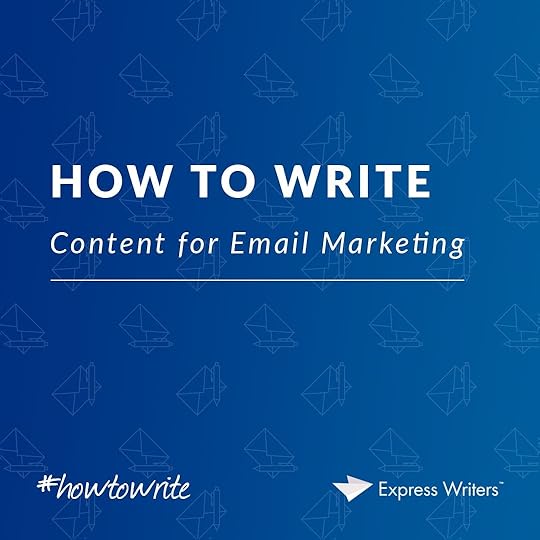
Email marketing is different than social media. It’s more personal, more targeted, and, as a result, higher-stakes. With this in mind, consider these practical tips for how to write content for email marketing.
1. Write a Good Subject LineThe subject line is the gatekeeper in the world of email marketing. Write a good one and you’ll see a satisfying open rate. Write a poor one and you’ll suffer the sound of crickets in the background of your campaign.
While there are dozens of great ways to write a compelling subject line, the best ones all have a few things in common: They revolve around grabbing a reader’s interest and keeping it. With this in mind, follow all of the standard rules that come with writing any great email subject line: include action words; address the reader directly; make it unique, succinct, and short; and differentiate it from anything else they’ll see that day.
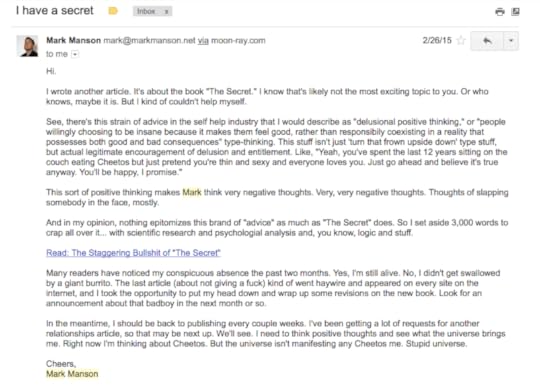
Personalized email copy performs better than general email copy. With this in mind, input your customer’s name into your email subject lines and be sure to target the body of your email so that it speaks directly to your audience and nobody else’s.
While it can be easy to worry that your emails will be lost in the fray, the only way to ensure that they won’t be overlooked is to personalize them fully and differentiate them from anything else out there.
3. Make Your Emails Clear First, Catchy SecondCatchy emails are great, but only if they’re also clear enough to make your audience want to click on them. With this in mind, focus on making your emails clear and descriptive first, catchy second.
4. Ensure Your Subject Line Relates to Your CopyEven if your subject line is clear and catchy, it’s all for naught if it doesn’t also align with your body copy. Keep in mind that delivering what you promise is critical in the world of email, and only people who can truly do this succeed in the long run.
With this in mind, keep your subject text in-line with your body copy. In addition to providing better value for readers, this will also go a long way toward enhancing your reputation as a company and making sure that customers want to click your material in the days to come.
5. Keep It RelevantRelevance is critical for a good email, so be sure to tie the content of your email in with something that will ground it as relevant and in-demand. Current events work well, as does some personal detail about the audience. By showcasing your relevance, you stand a better chance of grabbing the reader’s attention and keeping it.
6. Write Emails in the Second PersonSecond person is the best voice for email because its personal and unique. When you reach out and speak directly to your customers, it’s easier for them to relate to the voice and content of your email.
This, in turn, also makes it easier for them to connect with your emails, and enhances the likelihood that they’ll open your emails in the future – which is a good thing for everyone involved.
7. Showcase Benefits Over FeaturesIf you’re making an offer via email, be sure to showcase the benefits of said offer rather than the features. In addition to being more valuable for readers, this also helps present a realistic picture of your product, which goes a long way toward helping people understand what to expect from it.
While most people focus on the features in an attempt to sell a product, focusing on the benefits can go much further toward helping the reader understand what’s unique and special about the product.
8. Keep It Short but SweetEmail marketing is not the place to get long-winded and verbose. Instead, keep your emails as short and to-the-point as possible. This enhances the likelihood that you’ll keep your audience’s interest and also serves to keep you on track and on topic throughout the duration of your email campaign.
9. Let Your Personality Shine ThroughYour personality should show through in the emails you write, and it will benefit your company and your personal brand if you follow this tip. While you always want to be professional, allowing your personality to shine through your email copy is an effective way to differentiate yourself from the crowd.
10. Don’t SpamSpamming your readers is the cardinal sin of email marketing. With this in mind, only send out posts when you have things to say and don’t ever, ever send out an email just to send out an email. Customers are quick to unsubscribe, and you could be landing yourself in hot water as a result.
Resource:
https://content.marketing/writer-agreement
https://www.clearvoice.com/blog/10-types-content-writers-use/
https://expresswriters.com/how-to-write-content-for-email-marketing/



